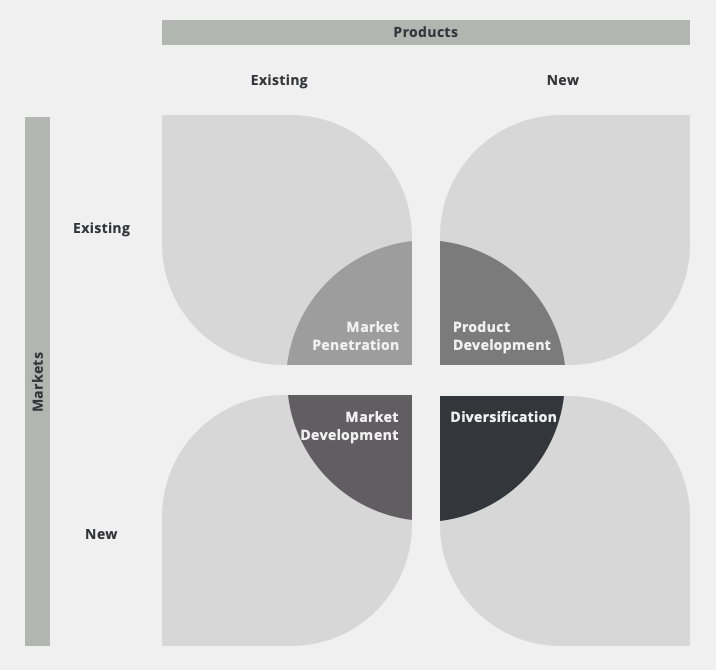Lessons from Uber’s Strategic Expansion Using the Ansoff Matrix
In a previous discussion (Rethinking Growth), I explored the fundamentals of the Ansoff Matrix, a powerful framework for strategic planning. Building on that foundation, I want to dive into a real-world application of this model, drawing on my experiences at Uber, to illustrate how dynamic growth strategies can significantly shape a company's trajectory.
Implementing the Ansoff Matrix at Uber
Market Penetration: At Uber, market penetration was not just about increasing the user base; it was about refining our service to maximize efficiency and satisfaction. As more users and drivers joined the platform, we were able to fine-tune our pricing algorithm. This optimization provided better pricing for customers and more favorable fares for drivers, enhancing retention and increasing the lifetime value of each user. To address safety concerns, Uber introduced insurance for every trip, thereby strengthening customer trust. Moreover, the launch of UberPool allowed customers to share rides and split fares, further broadening our market appeal. The introduction of service tiers like uberX, UberXL for larger vehicles and UberLUX for luxury cars catered to diverse customer needs, enhancing our market penetration efforts.
Market Development: Uber's journey began in San Francisco, but our ambitions were global. Rapid expansions into major U.S. cities like New York and Chicago were just the beginning. Internationally, were targeted major capitals such as Paris, Toronto, London, Mexico City and Bogota. This strategic geographic expansion was crucial, allowing us to tap into new markets and significantly increase our customer base. Each new city brought distinct challenges and opportunities, but the overarching goal was clear: global presence.
Product Development: Initially focusing on Black Service vehicles, which included registered commercial livery vehicles like limos, Uber’s product offerings evolved dramatically over the years. The launch of UberX was a game-changer, democratizing the service by allowing almost anyone with a car to become a driver. This move significantly widened our market reach. Additionally, adapting our payment systems to include cash transactions catered to markets with less reliance on credit and debit cards, allowing us to serve a broader demographic.
Diversification: Uber’s diversification strategy marked its foray into logistics and more. UberRUSH, a courier service in New York, signaled our initial steps toward becoming a logistics powerhouse. Following that, UberFRESH—later rebranded as UberEATS—ventured into food and grocery delivery. The acquisition of Jump Bikes and the introduction of Uber Bike further diversified our portfolio, underlining our commitment to becoming a ubiquitous solution in transportation and logistics. Lastly, Uber Freight was launched in the U.S. and operates as a powerful platform that connects shippers with truckers, streamlining the process of freight transport, thereby enhancing efficiency and reducing costs for both parties.
Strategic Lessons and Reflections
Over more than a decade since its inception in 2009, Uber’s strategic maneuvers across these four dimensions of the Ansoff Matrix illustrate a relentless pursuit of growth and sustainability. Not all endeavors were successful—withdrawals from markets like China, Russia, and Southeast Asia, as well as scaling back UberEATS in several Latin American countries, highlight the challenges faced.
In 2023, Uber's revenue distribution across its various service verticals was notably differentiated. The revenue breakdown was as follows:
Mobility: This segment was the largest contributor, generating $19.6 billion.
Delivery: The delivery services followed with $12.1 billion in revenue.
Freight: The freight services contributed $5.24 billion, reflecting its importance but growing at a slower pace compared to mobility and delivery services.
Final Thoughts
Uber's strategic journey offers invaluable lessons on the application of the Ansoff Matrix in real-world scenarios. It underscores the importance of adaptive strategies that respond to market dynamics and consumer needs. As companies consider their paths to growth, Uber’s experiences serve as a compelling case study of leveraging market penetration, market development, product development, and diversification to navigate and succeed in the complex global marketplace.
🔔 Subscribe Today! 🔔 Don't miss out – subscribe to my blog and get the latest articles delivered straight to your inbox.
🤝 Share the Knowledge! 🤝 This article spoke to you? Share it with your circle! Let's spread the knowledge and make a bigger impact together.
💬 I'd Love to Hear from You! 💬 Your thoughts and insights mean the world to me. If something sparks your curiosity or you have a moment of inspiration, send me a message! I’m all ears and always excited to engage with my readers.



